What is making NHS staff sick and want to leave their job?
By Syeda Tazrin, Bethany Croak, Sharon Stevelink, Neil Greenberg
Long waiting lists and cancelled operations in the National Health Service (NHS) have long dominated headlines. Recently, the pressures on the NHS workforce have intensified; 9.6% of NHS staff left the service in the year to September 2020, compared to 12.5% in the year to September 2022 (1). The COVID-19 pandemic along with the ongoing difficult economic climate, namely the compounding effects of austerity and subsequent funding cuts to the health and social care sector, continues to put significant strain on staff and mental health services. In addition to staff leaving, sickness absence rates are at an all-time high. March 2022, in particular, saw a record high sickness absence rate of 6.0%; this is higher than during the peak pandemic times of March-June 2020 (4.0%) and January 2021 (5.7%) (2) and a 29% rise from the 2019 rate (3).
The NHS CHECK study was launched early in the pandemic to originally understand the health and wellbeing impacts of the pandemic on NHS healthcare workers across 18 NHS Trusts in England. Data was collected at four time points between April 2020 and February 2024 to understand the ongoing experiences of healthcare workers beyond the COVID-19 pandemic. Both clinical (such as doctors and nurses) and non-clinical (such as administrators and cleaners) staff were invited to participate through an online survey. In this blog we present one of the sub-studies of NHS CHECK which investigated sickness absence and intention to leave the NHS.
Aim
In this study we aimed to identify whether factors such as gender, age, mental health problems, and type of job role influenced NHS staff absences due to illness and their intentions to leave their jobs one year later (May 2021-February 2022).
What data from NHS CHECK did we use in this study?
Around 5,000 healthcare workers answered questions about their intention to leave the NHS and about 10,000 healthcare workers provided information about their sickness absence.
What we found out
The majority of respondents were white, female and in clinical roles (See figure 1). Nearly a quarter regularly thought about leaving the profession (see figure 2). In the 12-month data collection period (May 2021-February 2022), most of the sick leave was non-COVID-19 related (see figure 3).
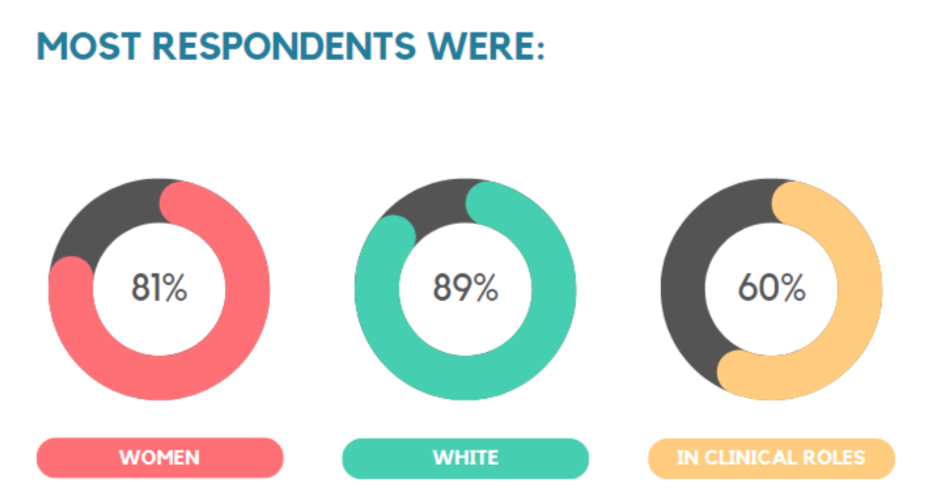
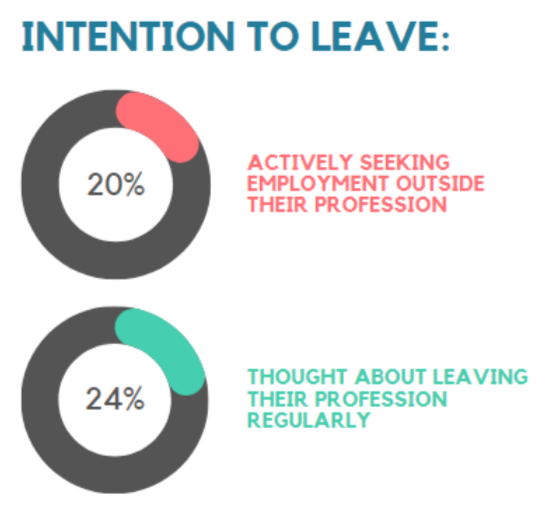
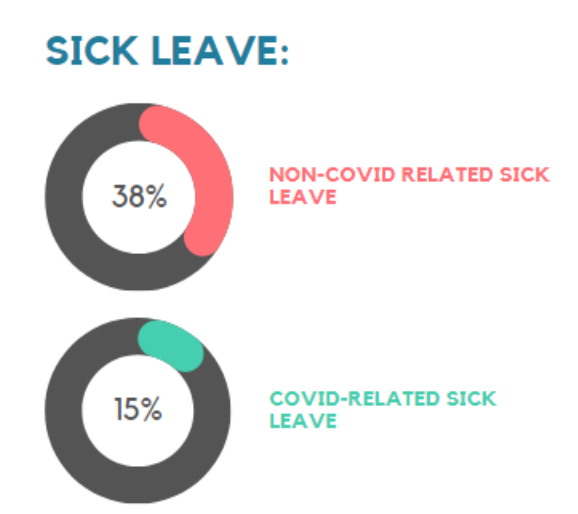
There were some shared risk factors which related to both thinking about leaving the NHS and taking sick leave (both COVID-19 and non-COVID-19 related). These traits include having a probable mental health difficulty and feeling unsupported by colleagues and managers (see Figures 4, 5 and 6).
The strongest results were seen in the association between thinking about leaving the profession and feeling unsupported by colleagues and managers (see figure 4).
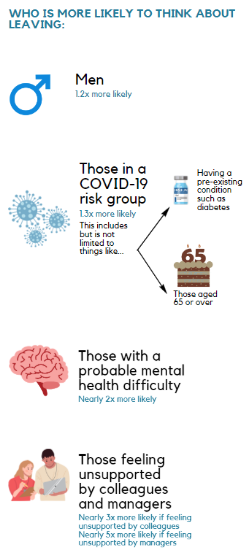
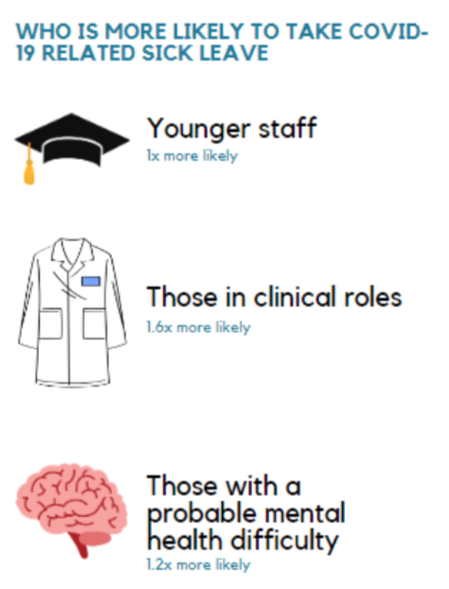
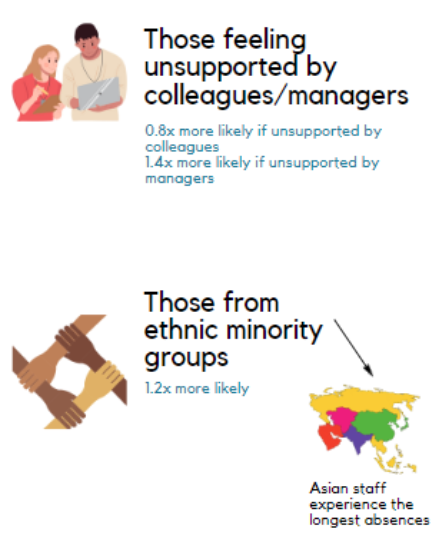
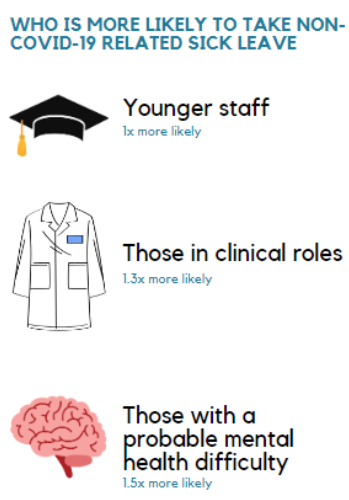
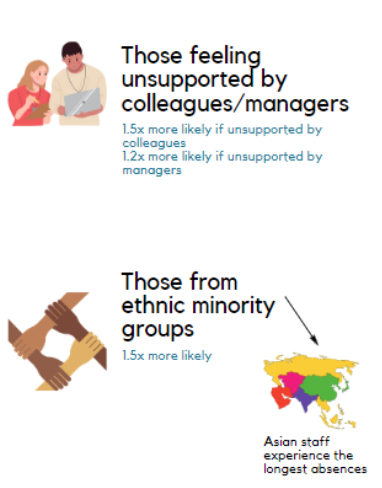
What does this all mean?
Main takeaways
In total, 15% of staff reported taking leave due to COVID-19-related reasons and 38% of staff reported taking leave due to non-COVID-19 illness reason.
Table 1 below shows the factors associated with taking COVID-19-related sick leave, non-COVID-19-related sick leave and the shared factors for sickness absence and intention to leave the NHS.
| Factor | COVID-19 Sick leave | Non-COVID-19 Sick leave | Intention to leave | Sickness, absence and intention to leave |
| Younger Staff | X | X | ||
| Clinical Role | X | X | ||
| Probable Mental Health Difficulty | X | X | X | |
| Ethnic Minority | X | |||
| Feeling unsupported by managers or colleagues | X | X | X | X |
| Being in a COVID-19 risk group (including conditions such as diabetes and being over 65) | X | |||
| Being a man | X |
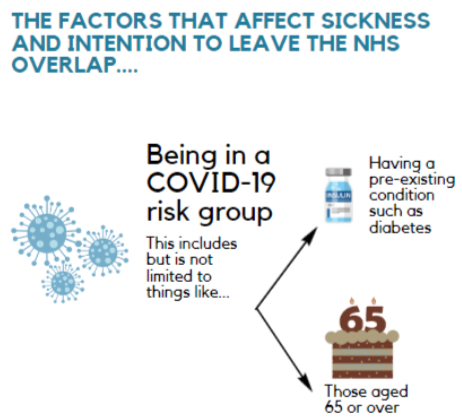
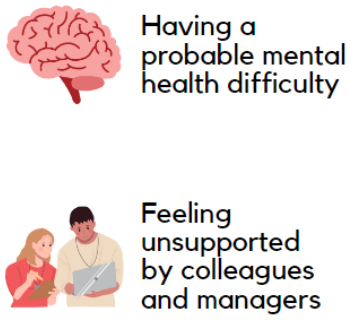
Strengths and weaknesses of the study
The study’s large sample size and the fact the study followed individuals over time provide a better understanding of factors predicting intentions to leave and sick leave. Specifically, a large sample size means the data was more likely to be representative of the NHS workforce. Equally, following the same participants over time allows us to detect changes at various timepoints for and compare these changes between different groups of people.
Nevertheless, there are some limitations. About half of the initial participants did not complete the follow-up survey from which the sickness and intention to leave data was taken from which means less information was captured than possible. Moreover, there may be potential bias in who chose to complete the follow up and therefore were included in the analysis.
What can be done?
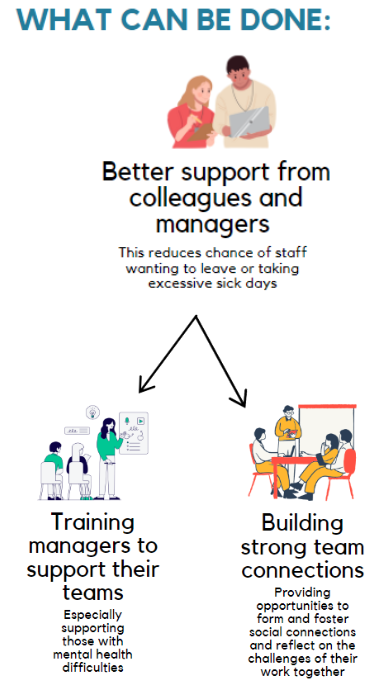
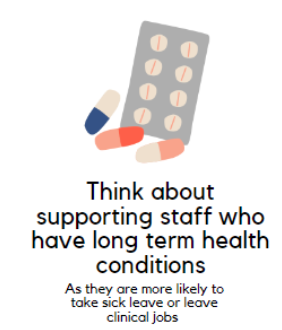
What the research team is doing next:
We are conducting further research to account for the trends we have seen in this research. Building on an earlier study which examined the prevalence and risk factors for Post COVID-19 Syndrome (PCS) at 12 and 32 month follow-up, we are now conducting a study looking at how reporting PCS symptoms may affect self-reported sickness absence among healthcare workers. We are also exploring risk factors for requiring COVID-19-related long-term sickness absence (classed as 4 or more weeks off work at once) among healthcare workers with PCS symptoms.
We are also investigating the longer-term impact of the COVID-19 pandemic on mental health and work outcomes of healthcare workers using all the NHS CHECK waves. The studies are still in early stages. Some of the outcomes we are considering are probable depression, anxiety, PTSD, alcohol misuse, burnout, intention to leave, and exposure to morally injurious events.
We are looking at the use of support services among NHS workers during the pandemic. At 6 months follow-up, we have information on seven support services and will examine demographic and occupational predictors for using any or none of these supports. At the follow-up surveys, we have information on use of formal medical and psychological support services and will explore demographic, occupational and psychosocial predictors for using these supports.
References
1. Retaining NHS nurses: what do trends in staff turnover tell us? – The Health Foundation [Internet]. www.health.org.uk. Available from: https://www.health.org.uk/news-and-comment/charts-and-infographics/retaining-nhs-nurses-what-do-trends-in-staff-turnover-tell-us#:~:text=Overall%2C%20the%20staff%20leaver%20rate%20in%20NHS%20trusts
2. NHS Sickness Absence Rates [Internet]. NHS Digital. Available from: https://digital.nhs.uk/data-and-information/publications/statistical/nhs-sickness-absence-rates#past-publications
3. NHS staff sickness hits record high in England. BBC News [Internet]. 2023 Jun 28; Available from: https://www.bbc.co.uk/news/health-66047270#:~:text=Staff%20sickness%20in%20the%20NHS%20in%20England%20has
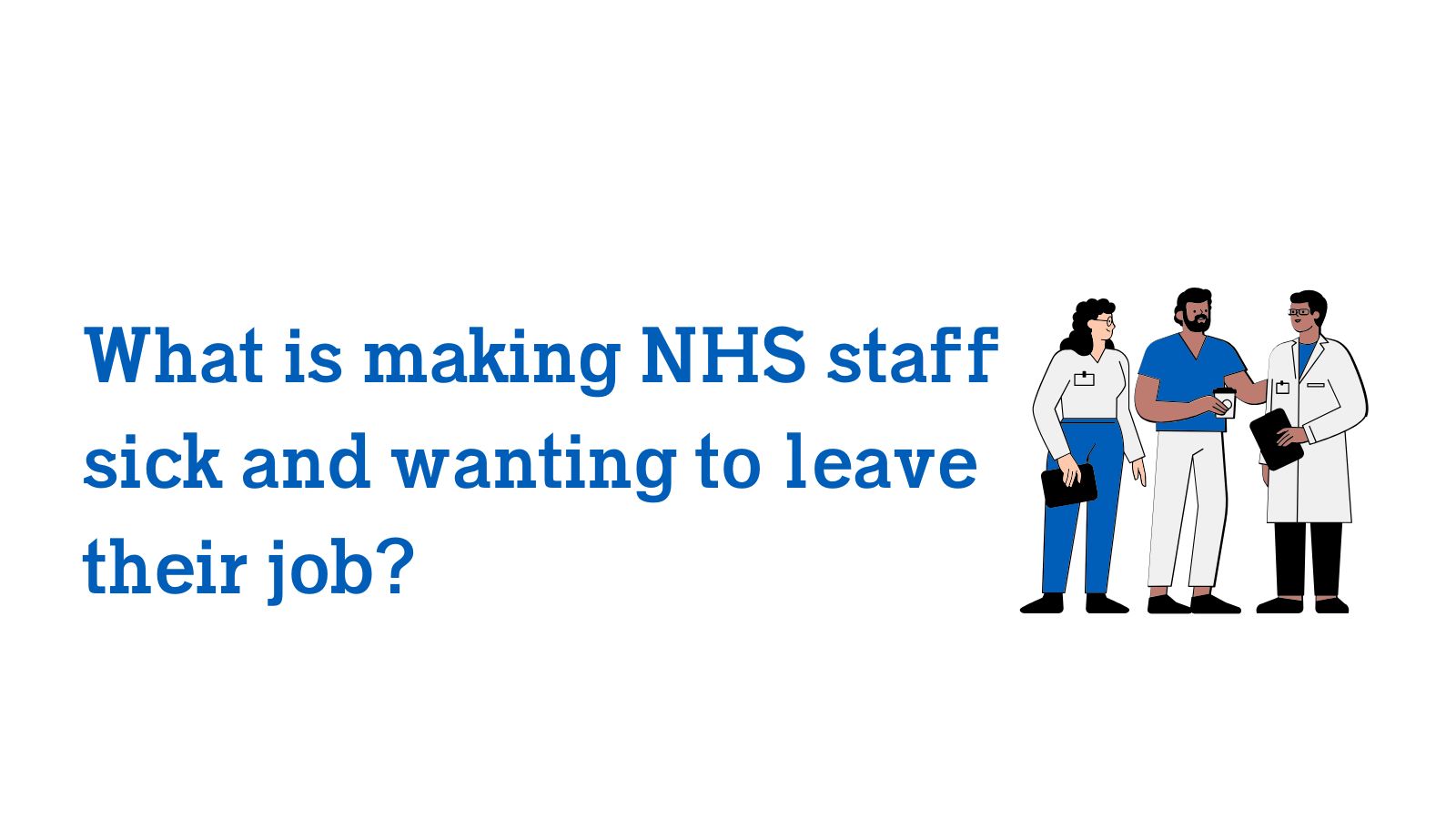
No responses yet